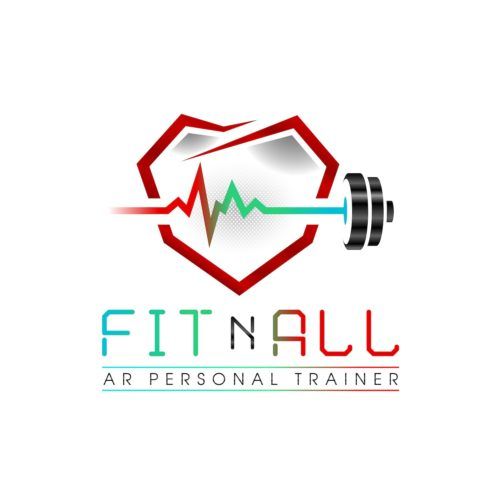In today’s fast-paced world, with hectic schedules, demanding workouts, and the constant need to push harder, it’s easy to overlook one of the smartest strategies in athletic development: deloading. In the athletic world, this concept is known as a “deload,” a purposeful reduction in training volume, intensity, or both, for a short period of time to boost recovery, performance, and longevity. Here’s what you need to know about how and why to include deloading in your program and how the same principle can benefit your life beyond the gym.
What is Deloading?
A deload is a scheduled break in your usual training routine where you scale back the workload (not stop training altogether) so your body and mind can recover. It’s not simply resting, but instead training less intensely or less frequently to allow built-up fatigue (both muscular and nervous system) to dissipate and prepare you for the next training phase. As the Cleveland Clinic puts it: “A deload week may be what you need if you work out regularly but somehow feel physically or mentally weaker instead of stronger.”
Why Deloading Matters
When you train hard consistently, you accumulate fatigue. Not just in your muscles, but in your joints, your connective tissue, and your nervous system. If you ignore that fatigue, you may hit a plateau, lose motivation, or even get injured.
Key benefits of deloading:
- Prevents performance stagnation or regression. Continuous training without rest or proper workout diversification can create plateaus. Timing your deloading properly can lead to stronger outcomes once you resume full intensity.
- Reduces injury risk. Chronic overload without recovery is a recipe for overuse injuries, burnout, or joint breakdown. By giving your body much-needed rest, you reduce your risk of injury.
- Improves mental freshness and motivation. The gym grind can become stale. A deload week offers a mental reset that can reignite your motivation.
- Allows you to maintain momentum. Unlike simply skipping training entirely, a deload allows you to continue moving forward, albeit with lighter or fewer sessions, so you don’t lose your momentum or conditioning.
Who Needs to Deload and When
Deloading is not necessary for everyone regularly. The frequency and need of a deloading period vary based on training status, intensity, and external stressors.
Who Needs to Deload:
- Training Intensity & Volume: Deloading is useful when you train intensely or with high volume. The heavier and more frequent your sessions, the sooner you may need a deload.
- Training Experience: Beginners often tolerate more without needing as frequent deloads, while advanced lifters who train harder usually need them more often.
- Age: Chronological age also influences deloading needs. As people get older, recovery tends to slow due to hormonal shifts, reduced muscle elasticity, and longer tissue repair times. Therefore, older lifters often benefit from more frequent or longer deload phases compared to younger athletes, even when training experience is similar.
- External Life Stress: Work pressure, poor sleep, regular traveling, and emotional stress all increase recovery demands. If life is taxing, your body has less “budget” for training fatigue.
When to Schedule a Deload:
- As part of your training cycle, for example, every 4-12 weeks of intense training, depending on your level.
- When you notice signs of over-training or burnout:
- Your lifts feel heavier, you’re weaker than normal, or your performance feels off.
- You’re constantly sore or achy.
- Motivation to train is low.
- Your sleep or mood is off.
Put simply: If your body is telling you “slow down”, it may be time to deload.

How to Deload: Practical Options
There’s no one “right” method, and you can tailor deloading to your sport, goals, and individual recovery needs. Here are common approaches:
- Reduce the Intensity: Reduce the weight you lift. For example, drop to 40-60% of your usual 1RM for your major lifts for a week.
- Decrease Volume: Decrease the number of sets, reps, or session count. For example, keep weights higher but do fewer sets or reps, or reduce training days.
- Change the Type of Training: Instead of heavy resistance training, focus on mobility, stretching, technique work, light cardio, or active recovery.
- Shift Exercise Selection: Skip or lighten “hot” lifts you do repeatedly. Switch to alternative movements to give certain joints/tissues a break.
Putting it together:
Deloading is a strategic phase in training that allows your body and mind to recover while maintaining movement. To implement it effectively, choose one or two training variables to reduce, such as the amount of weight lifted, the number of sets performed, or the frequency of workouts. Keep the deload short, typically lasting five to seven days, to give your muscles, joints, and nervous system time to reset without losing momentum.
During this period, continue moving through light activity or lower-intensity workouts rather than becoming completely sedentary. Once the deload is over, gradually ramp back up to your regular training intensity instead of jumping straight into heavy or high-volume sessions to prevent fatigue or injury and ensure sustainable progress.
Reflections
I’ll admit: I didn’t always schedule deloads. In the past, I treated training like a “go-for-it” mindset, less rest, more work. I’d only pull back after major competitions or when injuries forced me. But over time, I learned that listening to my body and planning in deliberate recovery brought better gains, less fatigue, and more consistency.
If you’re wondering whether you should deload now, ask yourself: Are you feeling regularly sore, not recovering well, unmotivated, or stuck in a plateau? If yes, you might be overdue for a recovery week.
Beyond the Gym: Deloading Life
Interestingly, deloading isn’t only about lifting weights or performance training. The same principle applies outside the gym – in life, business, and relationships. Taking strategic breaks in different areas of life can improve focus, reduce anxiety, sharpen your thinking, rejuvenate your business, and even be anti-aging.
Consider this:
- Are you feeling burned out in some area of your life?
- Are you feeling emotionally drained, lacking motivation, or being more reactive than usual?
- Are you feeling like you’ve been sprinting non-stop without a chance to recalibrate?
If so, you might need a “life deload.” That could mean taking a day off, dedicating a few hours to slower, intentional activity, stepping away from devices, shifting from constant doing to being. The goal is to reduce the “load” for a short window so you come back sharper, more energized, more purposeful.
Final Thoughts
In our hustle-driven culture, we often think “more is better.” But when it comes to high-performance training and life, sometimes the smartest move is less for a moment. By scheduling and embracing deloads, you give yourself the gift of resetting. You give your body and mind permission to recover so you can return stronger, fresher, and more ready than ever. Think of it as “taking a load off to come back loaded up.” Whether you’re chasing strength, endurance, fat loss, or simply sustainable health, don’t skip the deload. It might just be the secret weapon you’ve been ignoring.
To a Fitter Healthier You,
The Fitness Wellness Mentor
About the Author
Adriana Albritton has a Master’s in Forensic Psychology, certifications in personal training, nutrition, and detoxification, and is the founder of FitnAll Coaching and blog. She is the author of 28 Days to a New Life: A Holistic Program to Get Fit, Delay Aging, and Enhance Your Mindset, and a coauthor of The Better Business Book Volumes II and III. With a background in mental health, Adriana brings a holistic, science-backed approach to wellness. She combines mindset coaching, fitness, and nutrition to help people stay lean, energized, healthy, and centered. As part of Health Six FIT, she’s also helping reshape healthcare through AI-driven, integrative wellness education.



